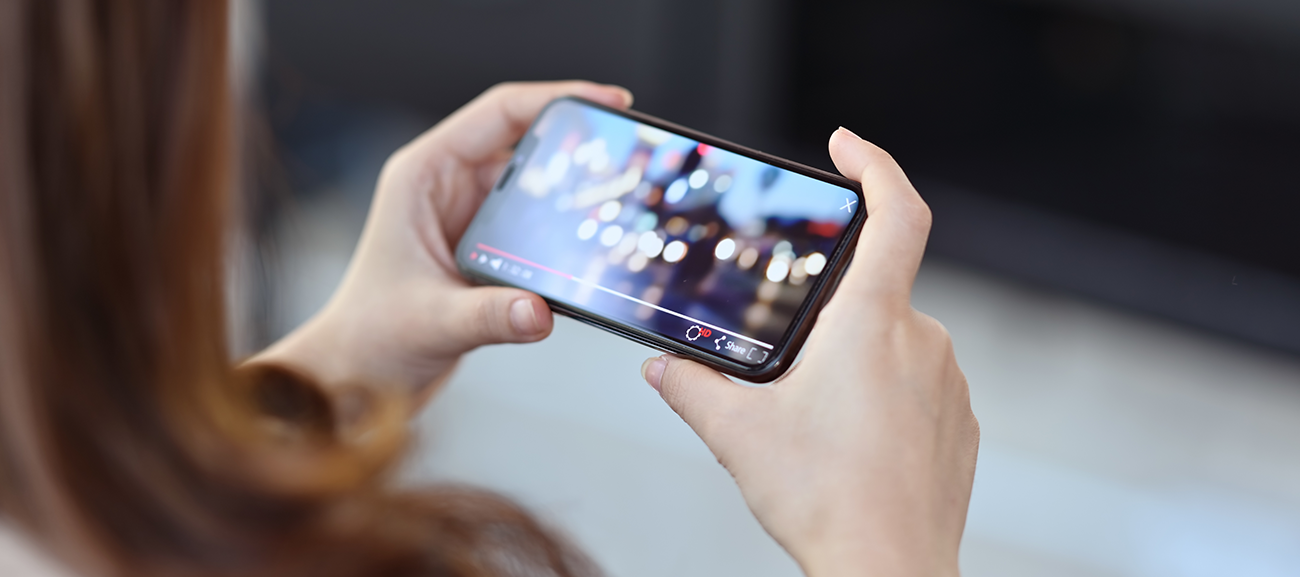Struggling to stick to your data limit? Here are some top tips to help you save data and stop getting charged.
Data is your hero when you’re in a Wi-Fi dead zone and desperately need to WhatsApp your mates or upload a new story to Insta.
But it can be pricey if you end up going over your monthly limit – and a huge mobile bill at the end of the month is the last thing you need.
Luckily, there are top tips and tricks for curbing your data usage so you can still get online, without paying through the nose.
1.Know your total data usage
Knowing your data limit and keeping tabs on your usage makes it much easier to stop before you’re charged. Not sure how to check this?
On Android:
Go to Settings > Wi-Fi & Internet > Data usage. A bar will show you how much of your data you’ve used – and how much you have left before hitting your limit.
Check the App data usage to see how much data each app uses on its own.
On iOS:
Go to Settings > Mobile > Mobile Data Usage. You can see how much data you’ve used under ‘Current Period’ – which you’ll need to reset every month.
2.Use Wi-Fi whenever you can
This one’s simple. Wi-Fi is free and it’s pretty much everywhere. Whether you’re in a café, park or shop, chances are there will be Wi-Fi near you.
Sometimes you might have to sign up with an email address, but increasingly Wi-Fi is free to use and anybody can access it. If you do have to get a password, the good news is that your phone will remember it for next time, and you’ll be able to connect automatically.
3.Restrict background data
There’s no point allowing apps to sap data when you’re not using them. Restrict your background data to stop this happening. It’s not a magical solution – you’ll still to make sure you have enough data in your plan to cover your usage – but it will help save mobile data for apps you are using.
On Android:
Go to Settings > Wi-Fi & Internet > Data usage > Cellular data usage. Click on an individual app, then untick Background data – this means you’ll only use data when you’re using the app.
On iOS:
Restrict all background data – go to Settings > General > Background App Refresh and set the slider to off.
Restrict individual apps – go to Settings > General > Restrictions and Enable Restrictions. Once you’ve set a PIN number, you can go through each app individually.
4. Using maps? Go offline
We all depend on maps and GPS to get us around, but they can be a massive drain on data. The good news is that you can now download maps and use them offline. How? Just open Google Maps and find the area you want to map.
On Android:
Once you’ve found the place you want to download, tap the bottom and a larger menu will pop up. Tap Download. You’ll find your downloads under Offline maps under the Google Maps menu.
On iOS:
Open the menu in Google Maps, then tap Offline areas and then the plus icon on the lower right. Select the area you want to download, press Download, name it and tap Save.
5.Use streaming services with offline options
Loads of us are YouTube bingers and are subscribed to all kinds of channels. The problem is that it’s easy to burn through all your data in just one kitten video marathon. Fortunately, Youtube Red is a subscription service where you can download videos and watch them offline any time.
If music is what your data gets used on, try Apple Music, Google Play Music or Spotify. Most will offer a feature where you can download your favourite songs and albums.
If podcasts are more your thing, apps like Castbox will automatically download episodes of your fave podcasts when WiFi is present, so there’s no need to waste data.
6.Change your browsing habits
Most sites will automatically have mobile versions, but always choose the mobile version if given the option.
Try not to delete your browser cache either. Yes, it does take up a little space on your phone, but it will save your phone from downloading everything from websites you frequently visit.
You can also compress pages before downloading – which saves you even more data. But how?
On Chrome:
Tap the three dots at the top right, choose Settings > Lite mode. This is a little different to page compression, as Google rewrites the page to only give you the essentials – while saving you up to 60% of data.
Other browsers like Opera Mini will do this automatically.
7.Turn off automatic downloading in messaging apps like Whatsapp
Your mates may be keen to share some embarrassing pics from your night out, but some things are bad enough without throwing away mobile data too. Fortunately, you can turn off automatic downloading and just download things when you want to.
Open WhatsApp and tap the three dots at the top-right corner. Go to Settings > Data and Storage Usage. Under Media auto-download there are three options: When using mobile data, When connected on Wi-Fi, and when roaming. Tap on each of these options, deselect all options, then tap OK. Look further down the page and you can also reduce the data used in a call by toggling Low data usage.
8.Be careful watching/uploading on Social Media
Uploading and watching auto-play videos is one of the easiest ways to use a ton of data. Plus, images and videos are increasingly high quality, which can mean a ton of data.
Instagram:
You can use less data on Insta by slowing down the amount of time that videos taken to load. From the main menu, select Settings > Account > Cellular Data Use. You’ll then have the options to Use less data (iPhone) or Data saver (Android).
If you’re on Android, you’ll see an extra setting allowing you to control when Instagram shows you High Resolution Media. Make sure it’s on WiFi only.
Facebook:
When scrolling through your feed, auto-playing videos are everywhere. Fortunately, you can turn these off.
In the Facebook app, tap on the menu on the right-hand side. Scroll down to Settings & Privacy. Now tun on Data Saver. This will reduce image sizes and stop videos from playing automatically.
9.Set data usage limit
There’s one fool proof way to help you avoid going over your data limit – set a warning to cut off your data when you’re close. It’s like the big red button for emergencies. A last resort to help avoid catastrophe. But beware – once you’ve hit it you’ll be confined to Wi-Fi and you won’t be able to use any data to:
- send and receive messages or calls on apps
- access the internet
- access social media
Still want to set up a warning?
Here’s how:
On Android:
Go to Settings > Network & Internet > Data usage > Mobile data usage > Settings, and then turn ‘Data warning’ on.
Set the amount of data you want as your limit – ideally just under your data usage plan limit – then press Set.
On iOS:
You can’t set an alert directly with iOS, so you’ll need to download an app that can do it for you – like DataMan.
You can also set your phone to automatically turn off your data when you hit your limit.
On Android:
Go to Settings > Network & Internet > Data usage > Mobile data usage > Settings and turn on ‘Set data limit’. Choose ‘OK’ on the pop-up message, then ‘Data limit’ – put in your Gb limit and press ‘Set’.
On iOS:
Again, there’s no way of doing this directly, but you can set your iPhone to switch to Wi-Fi networks whenever they’re available. Go to Settings > Mobile Data and turn off Wi-Fi Assist.


